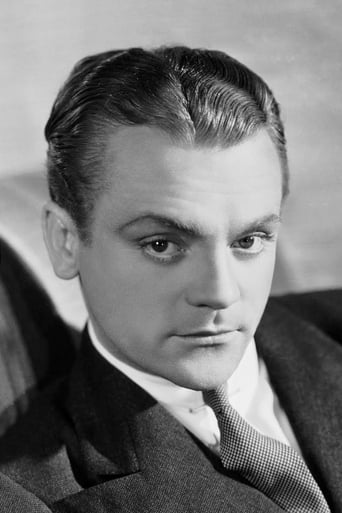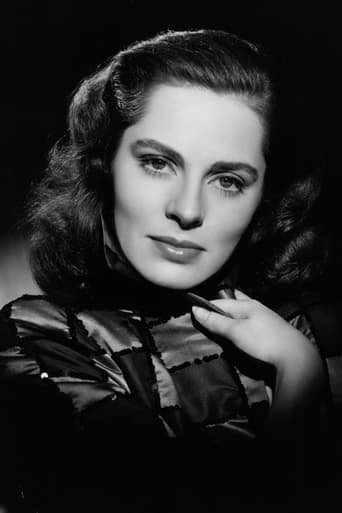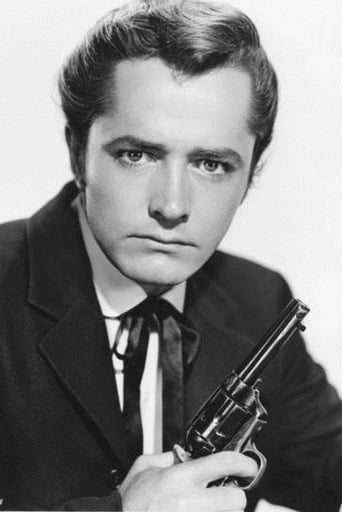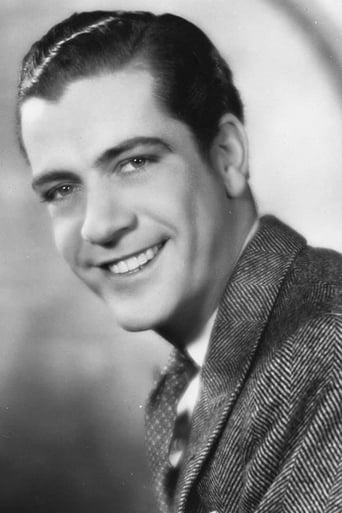Stometer
Save your money for something good and enjoyable
Odelecol
Pretty good movie overall. First half was nothing special but it got better as it went along.
Claire Dunne
One of the worst ways to make a cult movie is to set out to make a cult movie.
Aiden Melton
The storyline feels a little thin and moth-eaten in parts but this sequel is plenty of fun.
weezeralfalfa
This interesting western was shot mainly around Durango, CO, and the Aztec ruins in NM., as well as some studio shots, all in Technicolor. I enjoyed it despite a few questionable aspects........
Clearly, the heart of the drama is the complex and fluctuating relationship between James Cagney's and John Derek's characters. It starts out something like the relationship between mature ex-sheriff Henry Fonda and young new sheriff Anthony Perkins, in "The Tin Star", where Fonda gives Perkins advice on how to be an effective sheriff and gunslinger. In the present case, the mature Cagney gives a reluctant young Derek a chance to prove himself as a sheriff's deputy. But, in this case, it doesn't work out well, as Derek loses a prisoner(played by Ernest Borgnine) he is escorting to another town. Derek quits in embarrassment.. He then, unknowingly, joins a band of thieves, who rob the town bank in broad daylight, while practically the whole town is in church. The gang would soon meet an ignominious end, without involvement of the sheriff or town's people........Let me say that, when Cagney and Derek first met, out in the boondocks , Cagney very nearly pugged Derek, who came upon him quite by surprise. This was just the first of a series of incidents where it was the intent of one to defend or to shoot or otherwise promote the death of the other. While on the trail of the bank robbers, Derek suddenly, pulled out his gun and was about to fire at Cagney, when his horse reared up. This is when Cagney discovered that he was allied with the robbers(In what capacity, isn't apparent). For a while, they rode together in an uneasy truce. But when, they have to swim a raging river, Cagney calls out for help, but Derek ignores him. Derek gets to the far shore first, and heads for the Aztec ruins, where he finds Borgnine: the prisoner who escaped from him(Why did he come to this forsaken place?). They have an uneasy truce. WARNING: SPOILER ALERT! Cagney survives the rapids and later encounters these ruins, eventually finding the other 2. Initially, there is an uneasy truce. But, Borgnine draws on Cagney, who shoots him apparently dead. The remaining 2 have some words. Borgnine is not quite dead, and slowly reaches for his gun on the floor. Cagney doesn't see this, but Derek finally does, as Borgnine is about to shoot Cagney. Derek draws his gun and fires at Borgnine, while Cagney shoots Derek, whom he assumed drew to kill him: Only one lucky survivor, and he knows where the bank money is hidden........Viveca Lindfors, as Helga Swenson, who emigrated from Sweden with her father, takes a liking to Cagney, seeing his devotion to his friend Derek, who had serious gunshot wounds instilled by a posse that assumed that he, along with Cagney, were a pair of train robbers. Derek is staying with the Swensons during recovery. Pretty soon, Cagney and Helga are talking marriage. Cagney says he wants to live in their house. But, this may sometimes cause conflict with Mr. Swensen. Conveniently, the latter is formalistically killed in the bank raid, thus eliminating this potential problem. This principle is applied in many westerns, where the traditional significant other of a person is eliminated to symbolically clear the way for a new significant other.
ma-cortes
The story of a man apart who brought faith to a youth , love to a woman, justice to land . At the beginning takes place a trilling start when a man called Matt Dow (James Cagney) and his newcomer pal Davey Bishop (John Derek) are mistaken as two train robbers . Dow , who has a few secrets of his own , clears his name and ends up as the new sheriff and he appoints Davey as his deputy . Matt romances a foreign woman named Helga Swenson (Viveca Lindfors) and settles in to a peaceful existence only to find that the boy grows restive . The boy is crippled by a bullet provoking his fury and bitter slide into badness . This odd little film seems to be an offbeat Western , though also packs conventional scenes . It contains a superficially conventional script , drama , snappy scenes , action , thrills and shootouts . The characters are well constructed , the talks are fluid , concise and expressive and address special attention to gestures , glances and movements ; however , some excessive familiar touches cannot overcome a little boring screenplay . It lacks the baroque , bizarre excesses of Johnny Guitar , Nicholas Ray's first Western . At the end takes place the usual dispute between protagonists , James Cagney and John Derek , both of them share a mythical confrontation . Good acting by James Gagney as an ex-con becoming sheriff who tries to curb his own anger at the injustices he has suffered ; this is the second of three westerns that Cagney made , his first western was "The Oklahoma Kid" (1939) and his third and final one was "Tribute To A Bad Man" (1956). His embittered young as well as antagonistic companion was middlingly played by John Derek . The support cast is pretty good , being magnificent played by a group of splendid secondaries such as Ray Teal , Ernest Borgnine , Denver Pyle , Grant Whiters , Jack Lambert and final film of Jean Hersholt. Colorful cinematography by Daniel L Fapp , though rereleased in black-and-white and an alright remastering being necessary . Producers acknowledge with thanks the cooperation of the department of Interior National Park Service for the scenes photographed in the Aztec ruins , National Monument Aztec , New Mexico .The motion picture was professionally directed by Nicholas Ray , though some moments results to be tiring and slow-moving . Nicholas has a sensitive handling of actors and provides an exact compositional sense . Ray is a classic director , his films deal with a deep description of civilized societies , he believes that corruption is an essential part of it , that society punishes sincerity , innocence and love, vengeance and greed determine the behavior of people. Other ordinary themes is the gulf between generations : the older and the youngest . Nicholas Ray is concerned adolescence and youth, to which he devotes a later work , just like "Rebel without a Cause", 1955 . He denounces violence in American society and shows the rough face of frustration and sexual repression . As the great and stylish filmmaker Nicholas Ray working at the peak of his powers in Knock on Any Door with Humphrey Bogart and again John Derek . Other successes of this master filmmaker shooting all kinds of genres are the followings : Wartime such as Flying Leathernecks , Bitter victory , Noir : Party Girl , Wetern : Johnny Guitar , The True Story of Jesse James , Adventure : The Savage Innocents , Wind Across the Everglades and the epics : 55 Days at Peking ,Kings of Kings .
Spikeopath
Run for Cover is directed by Nicholas Ray and adapted to screenplay by Winston Miller from a story by Harriet Frank Jr. and Irving Ravetch. It stars James Cagney, Viveca Lindfors, John Derek, Jean Hersholt, Grant Withers, Jack Lambert, Ray Teal and Ernest Borgnine. A Technicolor/VistaVison production, with music by Howard Jackson and cinematography by Daniel Fapp.When Matt Dow (Cagney) and Davey Bishop (Derek) meet up they quickly become friends, but events conspire to see them wrongly suspected of robbing the train heading for Madison. Hunted down by a Madison posse, Bishop, a Madison resident, is severely injured and Dow taken to town for possible lynching. What unfolds is the truth comes out and the two men end up working as the law in town, but there is many more secrets to be unearthed in this part of New Mexico...Nicholas Ray brings a meditative state to the picture, ensuring the thematics of surrogate families, generation conflicts, mob justice and the corruption of youth, are all delicately handled by the great director, even dealing in Freudian textures for the key character relationship. There's a whiff of High Noon in how Matt will inevitably have to stand alone, and he will also have to fight inner turmoil about injustices and cope with disappointments as things refuse to go to plan under Madison's glaring sun. But this is a skilled character piece able to stand on its own terms.As a looker the film is quite simply stunning. Filmed out of Durango, Silverton and Aztec (the latter providing the finale set in the Aztec Ruins), the scenery is breath taking, Ray and Fapp surrounding the story with an imposing beauty that is hard to take your eyes from. Cast are led superbly by a restrained and reflective Cagney, who can say so much with just one glance of his eyes, and while Lindfors as Cagney's love interest is a bit wooden, she's at least given some decent scripting to work with. Elsewhere nobody fails in bringing their respective characters to life.Absolutely lovely Oater, one that may not break new ground with its formula of plotting, but comes out roaring regardless. It makes you wish Cagney had made more Westerns, Nicholas Ray also, while Fapp's photography here is alone worthy enough to consider catching this on any potential Blu-ray release. 7.5/10
dbdumonteil
"Run for cover" occupies a curious place in Nicholas Ray's brilliant filmography.Sandwiched between "Johnny Guitar" and "Rebel without a cause,it suffered accordingly.They say Ray himself disliked it.And however,in "Run for cover" he opened up as he never did before.In "knock on any door" ,Ray had already displayed a "father" -"son" relationship between Bogart and John Derek (who takes on here roughly the same kind of part he played at the beginning of the fifties).Ray would reach his peak with the following work ("Rebel" ) where Plato wanted Jim to be his dad and began to think of a new family with his pal and Judy.Davey is a tragic character .He seems to be born under a bad sign ,he is known to have a very bad reputation wherever he goes.It's obvious in the scene of the train:whereas Matt (Cagney) wants to give the money back to the town,Davey is thinking of the life he could lead if this loot were his.Matt knows that Davey needs someone to become a man .Alone he would walk on crutches .His leg is a transparent metaphor.Maybe he thinks of a new family he would rebuild with Helga (Viceca Lindfords).The relationship between the mature man and the Swede is full of tenderness and human warmth,a permanent feature in Ray's canon (see the lovers of "they live by night" and the teenagers in " Rebel without a cause".Like Jeff in "lusty man",Matt had a raw deal and he wants to make the best of the years which he's still got to live.Jeff will help Wes become a man in the cruel world of rodeo,but it's a different matter with Davey Bishop (what a surname!).It's remarkable that violence appears twice after scenes depicting children: the first time when Matt is making a wooden gun for a boy ;the second time in the church as a choir of little boys and girls is singing a canticle to praise the Lord."Rebel without a cause" is probably Ray's most underrated work.Davey remains his most moving character ;without any mawkishness ,the director paints the picture of the rebel with a cause,who cannot understand why he should work for eight dollars a week when there's plenty of money to take.The last line is my favorite in any Ray movie.In its own special way,it preserves the viewer from despair.




